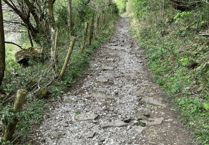By analysing MOT pass and failure rates across the UK, as well as the most common reasons for MOT failures, the motoring experts at BlackCircles have compiled together their comprehensive MOT Index.
The study also examined which car models are most and least likely to pass their MOT tests.
From 2020 to 2024, Llandrindod Wells was found to have the highest MOT pass rate. Drivers in the town had 52,958 tests in the last four years, with only 481 failures. Since 2020, the percentage of fails has dropped from 1.12% to 0.49%.
The second region on the list is East Central London. Between 2020 and 2024, 98.98% of MOTs passed. Around 1,575 tests were carried out in the region, with just 16 failures.
East Central London includes areas such as Islington, where just 5% of B and C roads require maintenance, and Westminster, where 4% of motorways and A roads need repair.
Dorchester rounds out the top three UK locations for MOT success with a 98.90% pass rate. There were 184,622 tests in the last four years, with just 2,029 failures.
Further findings:
- Electrical equipment is the leading cause of MOT test failures in Britain, with over one in 10 (11%) tests of category three and four vehicles (cars and light vans up to 3,000kg) recording a major or dangerous defect related to lamps, reflectors, or other electrical components in the 2024-25 financial year so far.
- Aberdeen has the most MOT test failures in the UK with 3.91% failed in the last four years.
- When it comes to MOT success, the Suzuki Ignis is at the top of the list with an almost perfect 94.64% pass rate last year. On the other end of the scale, Citroën Dispatch is the model least likely to pass an MOT test, with almost two-fifths (37.78%) of vehicles failing in 2024.
- The proportion of MOT failures in the UK has mostly declined over the last four years. The highest rate of failed MOT tests was in 2020, when 2.54% of all tests resulted in failure. This figure steadily decreased until 2023, reaching its lowest rate at 1.73%. Last year, the rate of MOT failures increased slightly, by 0.12% compared to the previous year.





Comments
This article has no comments yet. Be the first to leave a comment.